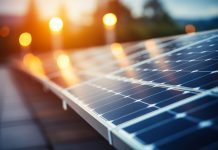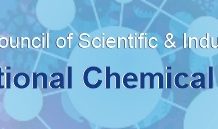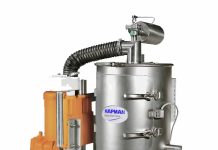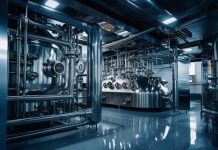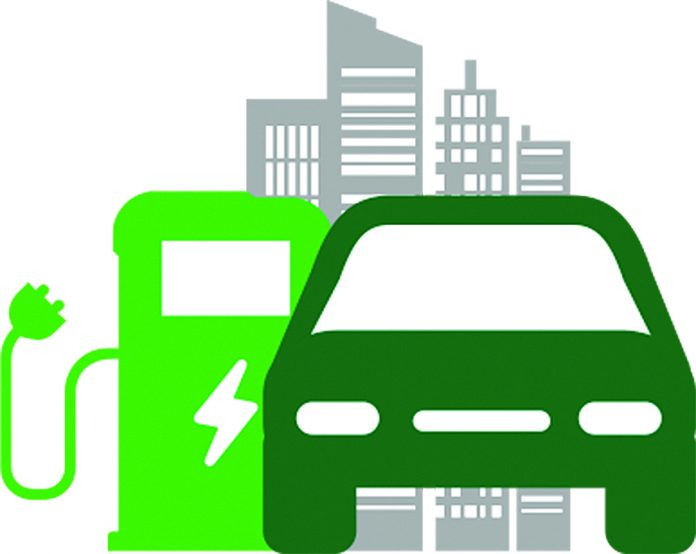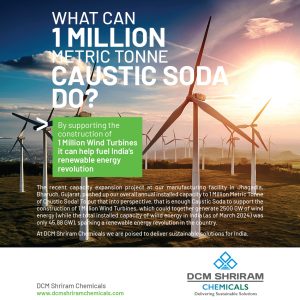Abstract
Fossils based energy is the driver of contemporary civilization since the Industrial Revolution and continues to play a dominant role in the global energy system. Use of fossil fuels has led to increasing pollution, emission of CO2 and other greenhouse gases. As new sources of fossil fuels are drying up, in the long run the world may run out of these fuels.
With the advent of renewable energy technologies are advancing to produce energy with a lesser environmental load such as solar energy together with developments in the storage of energy.
Hydrogen is a clean energy carrier, which when consumed in the fuel cell, produces only water, heat and electricity. Due to their high efficiency and zero-or near-zero-emissions operation, hydrogen and fuel cells have the potential to reduce greenhouse gas emission in many applications.
This article presents the recent perspectives of ‘Hydrogen Fuel’ and ‘Fuel-Cell Technique’ and its viability for transportation and energy generation.
 Dr. S. Sakthivel, (B.Tech- Chem Engg, M-Tech- Petroleum Refining & Petrochemicals, PhD-IIT-Delhi) is a Senior Technologist-Process at Tata Consulting Engineers Ltd since 2009. He has experience in process engineering, technology analysis-screening-selection, techno-economic analysis, design of laboratory & pilot experimental setup, process hazard analysis, basic, applied & market research, and powder & science technology. He has published a number of research and technical papers in national and peer-reviewed international journals.
Dr. S. Sakthivel, (B.Tech- Chem Engg, M-Tech- Petroleum Refining & Petrochemicals, PhD-IIT-Delhi) is a Senior Technologist-Process at Tata Consulting Engineers Ltd since 2009. He has experience in process engineering, technology analysis-screening-selection, techno-economic analysis, design of laboratory & pilot experimental setup, process hazard analysis, basic, applied & market research, and powder & science technology. He has published a number of research and technical papers in national and peer-reviewed international journals.
Introduction
Hydrogen is a versatile energy carrier that can be used as a fuel for electricity production or in industries as a feedstock for petrochemical, pharmaceutical, chemicals and fertilizer manufacturing, and in automotive manufacturing sectors. Hydrogen has the highest energy density of a common fuel by mass (120 MJ/kg), which is nearly three times that of gasoline (45 MJ/kg). It is one of the greatest advantages of hydrogen as a fuel and for energy storage as well.
Currently, bulk of the hydrogen produced is from carbonaceous raw material of fossil fuel via particle oxidation of coal, steam reforming of natural gas, oil reforming process, methanol reforming, ammonia cracking, thermo-catalytic cracking of methane and other industrial off-gases. Hydrogen can be also produced from renewable sources through thermo-chemical processes, photo-electrochemical, biomass conversion, and electrolysis of water. Presently, approximately 95 to 96% of the hydrogen produced comes from carbonaceous resources, which is mainly from natural gas, naphtha and coal. Globally, about 4% of hydrogen gas is produced by electrolysis[1]. The produced hydrogen is used for ammonia production (~53 %), refinery process of hydrocracking & desulphurization (~20%), methanol production (~7%), energy sources (~2%) and in other industries (~18%) such as food processing, electronics, metal production & fabrication. Furthermore, hydrogen is produced as a by-product in chlor-alkali industries, which is usually used as a fuel for heating and drying.
The global hydrogen generation market is expected to reach USD 199.1 billion by 2023, at a CAGR of 8.0% from 2018 to 2023. This estimated market comprises of ‘merchant-hydrogen’ and ‘captive-hydrogen’. ‘Merchant-hydrogen’ is that which is produced from a central production facility and distributed to end consumers by pipelines or cylinder truck delivery. Captive hydrogen is defined as hydrogen produced by the consumer for internal use. Currently, around 65 million tonnes per annum (mtpa) of hydrogen (H2) is produced globally, of which around 2% is used as energy source.
Hydrogen has been used as a clean fuel for automotive industry worldwide since early 21st century. The chemical energy of hydrogen is converted into mechanical energy either by burning hydrogen in an internal combustion engine or by reacting hydrogen with oxygen in a fuel cell to run electric motors. Hydrogen could be utilized in more quantities in the power and automotive sectors, which could reduce carbon-footprint. Hydrogen fueled vehicles offer many benefits, including no pollutant at tailpipe, high energy efficiency and less maintenance.
This article focuses on detailed insight into ‘carbon–free electricity’ production by combination of ‘electrolysis of water’ and ‘fuel cell’ technique’, which would be a boon for transportation and energy sectors.
Electrolysis of Water
Electrolysis of water is becoming attractive and gaining attention globally, due to the purity of hydrogen, clean energy demand and their applications. Electrolysis of water is the splitting (or decomposition) of water into oxygen and hydrogen gas molecules due to the passage of an electric current (DC power).
There are three prime technologies available for electrolysis of water such as:
(1) Alkaline Water Electrolysis (AWE)
(2) Proton Exchange Membrane Electrolysis (PEM)
(3) Solid Oxide Electrolysis (SOE)
AWE and PEM electrolyzers operate both on commercial and pilot scales worldwide due to their durability, maturity and flexibility of low temperature operation (<100 oC). AWE is a matured technology, commercially available in megawatt range, less expensive than PEM electrolysis, due to use of non-noble metal (nickel based) catalysts but consumes more electricity. PEM based water electrolysis is more beneficial than conventional alkaline electrolysis due to smaller size, their ecologically safe nature, high purity (>99.99%), cleaner, more reliable and possibility to produce at high pressure also.
SOE (solid oxide electrolysis) is made up of calcium or yttrium, stabilized zirconium oxide and it operates at high temperatures (500–1000°C) using high temperature ceramic membranes, which reduces the consumption of electricity for production of hydrogen by 30% (approximately) in comparison to other electrolyser processes.
Generally, electrolysis of water is an expensive and energy intensive process about 3 to 6 times higher when compared to production of hydrogen by steam reforming of natural gas. Typically, the production cost of hydrogen per kilogram is US$ 4 to 6, which accounts for 65-80% of total cost of feedstock (i.e. supplied electricity + water). To reduce the production cost of hydrogen, the efficiency of the electrolyzer has to increase with simultaneous decrease in the electricity production cost. Cost of electricity can be reduced by using solar PV or other renewable energy source, which are carbon free electricity production methods. However, the solar PV electricity production cost depends on the cost of the photovoltaic unit, related operation and maintenance cost.
Electricity cost is the most impacting factor for electrolyzer operation. The electricity costs could also vary based on location, fuel used, efficiency of power generation method etc. The cost of electricity, which comes from renewable source, is a major concern because it may be expensive than electricity generated from fossil fuel. However, with the rapid technology advancements in recent years, the cost of electricity from PV solar has come down significantly.
One of the major barriers to the adoption of renewable energy is storing the produced energy. Currently, renewable energy is stored into batteries (for a short term) and connected to grid. The new process of storage would be immensely more affordable than the battery storage method (lithium-ion). The excess of renewable energy can be stored as hydrogen by electrolysis of water, using power from solar photovoltaic cells or other renewable source.
Major challenges are corrosion related issues and poisoning of the electrolytes by inadvertent incursion of CO2, low current densities and low dynamics for alkaline water electrolyzer (AWE) and high cost of components, noble metal catalyst, acidic corrosive components and possible low durability for PEM. PEM unit uses noble metals like iridium, platinum, or ruthenium, which makes it more expensive. Table 1 shows the technology comparison of electrolyzer[2].
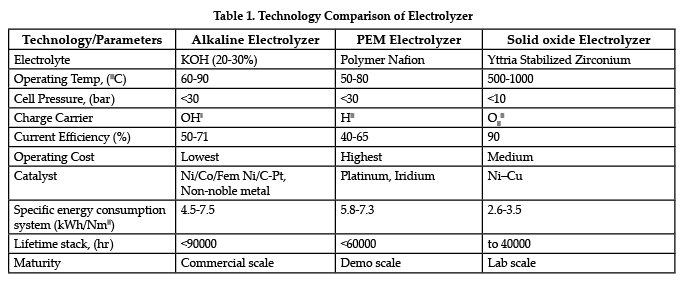
Technology Readiness Levels
In India, Bhabha Atomic Research Centre (BARC) and CSIR-CECRI have developed alkaline based electrolyser with porous nickel electrodes and activated nickel electrode, respectively. JNTU-Hyderabad has developed PEM based water electrolyzer to produce hydrogen using Nafion membrane. Still, the production of hydrogen through electrolysis of water is highly energy intensive (4.5-7.5 kWh/Nm3). ASKO Midt-Norge AS (2017) is commissioned with a capacity of 150 Nm3/hour for transport –H2 mobility in Norway. Reliance Industries Ltd (RIL) have installed an electrolyzer as a secure back-up and alternative hydrogen source for production of PTA (Purified Terephthalic Acid). Siemens, FRG plans to build an electrolyzer system with a capacity of 6 MW to store wind power as hydrogen.

Fuel Cell
Many commercial on-site and centralized hydrogen production facilities are commissioned for energy storage, which mainly comes from renewable sources. Figure 1 shows a schematic diagram of integration of renewable energy to e-mobility. Produced hydrogen can be reversed back into electricity by fuel cell technology. The electrolyzer is capable of producing high purity hydrogen (>99.99%), which is best-suited for fuel cell operation. Fuel cell is an electrochemical cell, which converts potential (chemical) energy of a fuel such as hydrogen (or methane, methanol etc) in the presence of oxygen or oxidizing agents (like O2, air, H2O2, O3 etc) into electricity and water. It is a simple and reverse process of electrolysis of water. It can produce electricity continuously as long as fuel and oxygen are supplied. There are many different types of fuel cell technologies available such as:
a) Alkaline Fuel Cell (AFC) – low temperature operation
b) Polymer Electrolyte Membrane Fuel Cell (PEMFC) – low temperature operation
c) Phosphoric Acid Fuel Cell (PAFC) – medium temperature operation
d) Solid Oxide Fuel Cell (SOFC) – high temperature operation
e) Molten Carbonate Fuel Cell (MCFC) – high temperature operation
f) Direct Methanol Fuel Cell (DMFC) – low temperature operation
Typical efficiency is 60 to 70% of AFC, 40 to 60% of PEMFC, 40% of PAFC, 60% of SOFC, 50% of MCFC and 35% of DMFC. Fuel cell type is differentiated by their operating conditions like operating temperature, catalyst, fuel type etc. Among them, PEMFCs are used primarily for transportation and some stationary applications; others are used for backup-power and auxiliary power.

AFC is mostly used to produce electricity and drinking water in spacecrafts (e.g. Apollo and space shuttle spacecrafts). Generally, aqueous solution of alkaline potassium hydroxide is used as an electrolyte and their output ranges from 300W to 5kW. However, it’s too expensive for commercial applications.
PEM FC in particular is most viable for portable power, transportation and stationary power due to (a) the electrolyte being solid, so leakage of corrosive fluids is not an issue, and the fuel cell can operate in any orientation (horizontally or vertically), (b) operating temperature being relatively low (50-80°C), which means that start-up time is short, (c) power density being relatively high compared to other fuel cells.
PAFC uses liquid phosphoric acid as an electrolyte and platinum as a catalyst, which has the same electrochemical reaction as PEM. Generally, PAFC is used for stationary power. SOFC can be used with many fuels and it has many advantages such as that (a) it does not require precious metal catalysts, (b) it is solid and rugged and (c) is high temperature resistant. The SOFC is used for medium and large power applications. DMFC is also most suitable for small portable power application due to methanol which has high energy density. But, many challenges have to be overcome such as excessive fuel crossover (methanol crossing the membrane), CO poisoning, low temperature production, considerably slow dynamic response and operating cost.
The global major electric vehicle (e-mobility) market is classified into (a) Plug-In Hybrid Electric Vehicles (PHEVs), (b) Battery Electric Vehicles (BEVs), (c) Fuel Cell Electric Vehicles (FCEVs). Typically, the ‘efficiency on wheels’ of internal combustion engine (ICE), hybrid electric vehicle (HEV), battery electric vehicles (BEV), fuel cell electric vehicles (FCEV) is 14 to 17%, 24%, 27%, 27%, respectively [3]. IEA global EV outlook 2017 reported 2 million in battery electric car sales in 2016, which is a market share of 0.2%. This information shows the rapid growth of electric vehicle market. Fuel cell electric vehicle is a real breakthrough for e-mobility.
Currently, there are a few car models available with fuel cell-electrical vehicles (FCEV), for example Hyundai’s ix35 fuel cell, Toyota Mirai, Honda Clarity FC and Mercedes-Benz F-Cell. The schematic diagram of carbon free e-mobility is shown in figure 2. The proposed fuel cell systems are of around 60 to 70% efficiency, 2-3 US$/kg of fuel cost, 483 km of driving range and US$ 24355 of vehicle cost as compared to IC –hybrid engine which has 10-16% efficiency, 0.98 to 1 USD/kg of fuel cost, 933 km of driving range and USD 24050 of vehicle cost[3]. The specific energy of lithium-ion batteries has increased to 250 Wh/kg (2018) from 90 Wh/kg (1990s) of cell. The cost of li-ion battery packs has decreased from over 1,000 US$/kWh to about 250 US$/kWh. Further it will fall to near 70 US$/kWh by 2030 as manufacturing efficiency is further improved. Similarly, fuel cell system cost has decreased from 124 US$/kWh to about 55 US$/kWh (2014). Further it will fall to near 40 US$/kWh by 2020 and ultimate target could be 30 US$/kWh.
The two technologies that are being developed fast are BEVs and FCEVs for e-mobility. BEV uses energy stored in a battery, whereas fuel cell vehicles have stored fuel that reacts to produce energy. BEVs might be used for running shorter, lighter work commuting, but FCEVs used for long-distance or heavy-duty applications. As of now, experts say that overall hydrogen FCEVs are less efficient than BEVs. But, these batteries are charged by using national grid power, FCEV generates electricity itself in a fuel cell by electrochemical reaction. Batteries and fuel cells are essential to improve the low-cost, long-driving range and high-utilization for e-mobility. Still further research and development is needed to improve the specific energy, energy density, energy storage cost, life cycle and efficiency.
Electrical vehicles are projected to reach a share of 25% by 2025 and 40% by 2030. This transition to a mix of electric vehicles and renewable energy production will reduce consumption of petroleum products in transportation sectors. With the large scale deployment of BEVs / FCEVs and renewables based energy production in coming decades, Indian government should review the refinery expansion plans. Parallelly, the infrastructure sectors to be developed, should take into account the transition to e-mobility with battery re-charging infrastructure for BEVs and hydrogen production, storage facility, electrode production, distribution, monitoring and equipment and systems development etc for FCEVs.
Conclusion
Energy demand is growing by the day. New fossil fuel deposits are becoming scarce. Increase in synthetic fuel production, is leading to environmental damage, especially degradation in air quality, with immediate health impact on animals and human beings. Thus, great attention has to be given to renewable energy production and its storage.
Hydrogen can be produced by electrolysis of water and it can be reversed as electricity by fuel cell technology. Thus, hydrogen is thought-out to be one of the key technologies permitting large-scale and long-term storage of renewable energy for future. Thus, E-mobility transportation would bring in great benefits to us like energy security, fuel economy, cheaper maintenance and less pollution etc. Still, research need to focus on further improvement of ‘electrolyzer’ and ‘fuel cell’ for increasing system efficiency, reducing capital expenditure (capex) and operational expenditure (opex), infrastructure for refuelling and speeding-up commercial scale up.
Reference
1) Report on hydrogen production in India, Sub-committee on research, development & demonstration for hydrogen energy and fuel cells steering committee on hydrogen energy and fuel cells MNRE, Govt. of india, New Delhi, March, 2016
2) Vincent, I., Bessarabov, D., Low cost hydrogen production by anion exchange membrane electrolysis: A review, Renewable and Sustainable Energy Reviews (2018), 81 (2), 1690-1704.
3) Junye Wang , Hualin Wang, Yi Fan, Techno-Economic Challenges of Fuel Cell Commercialization, Engineering 4 (2018) 352–360.

